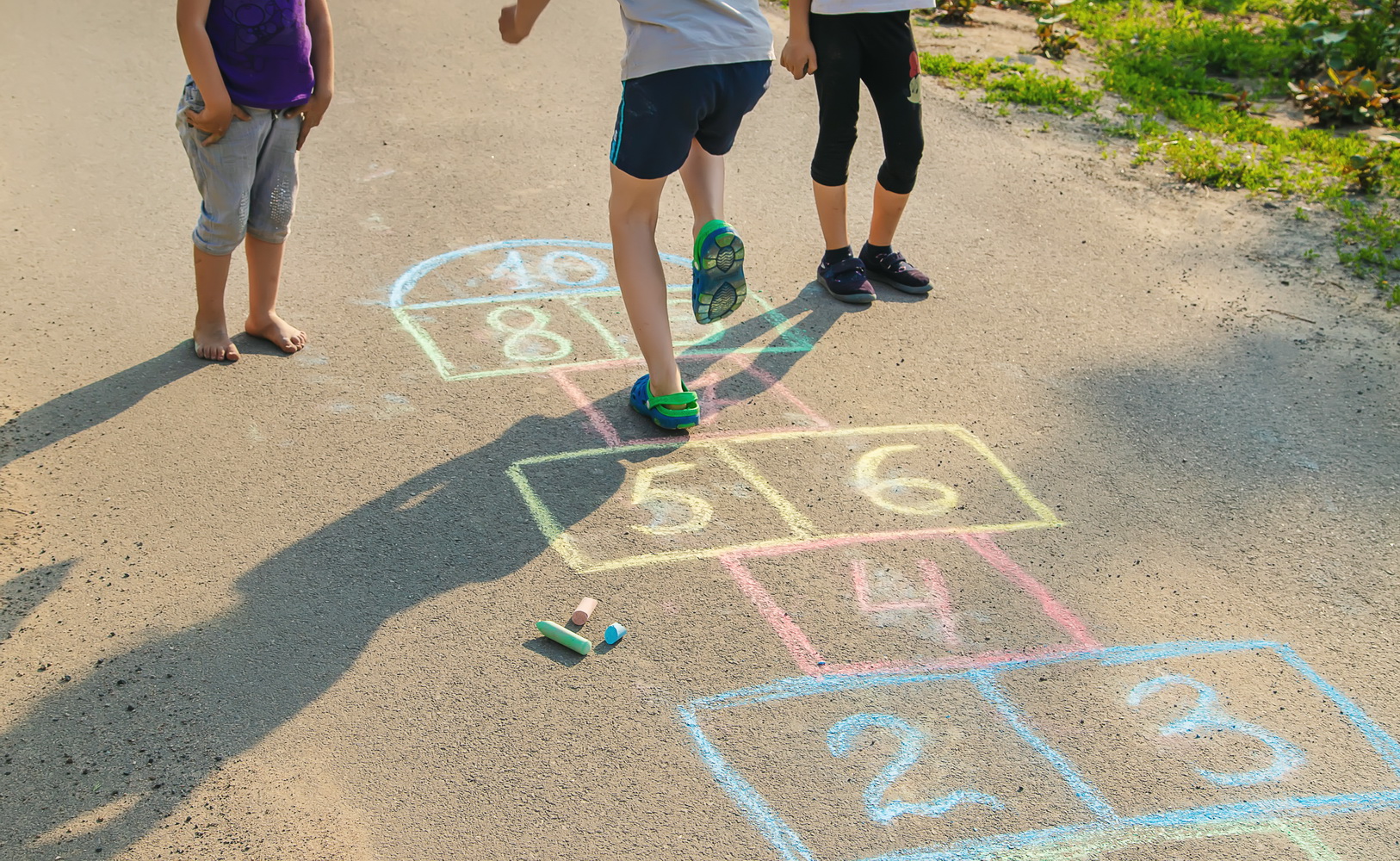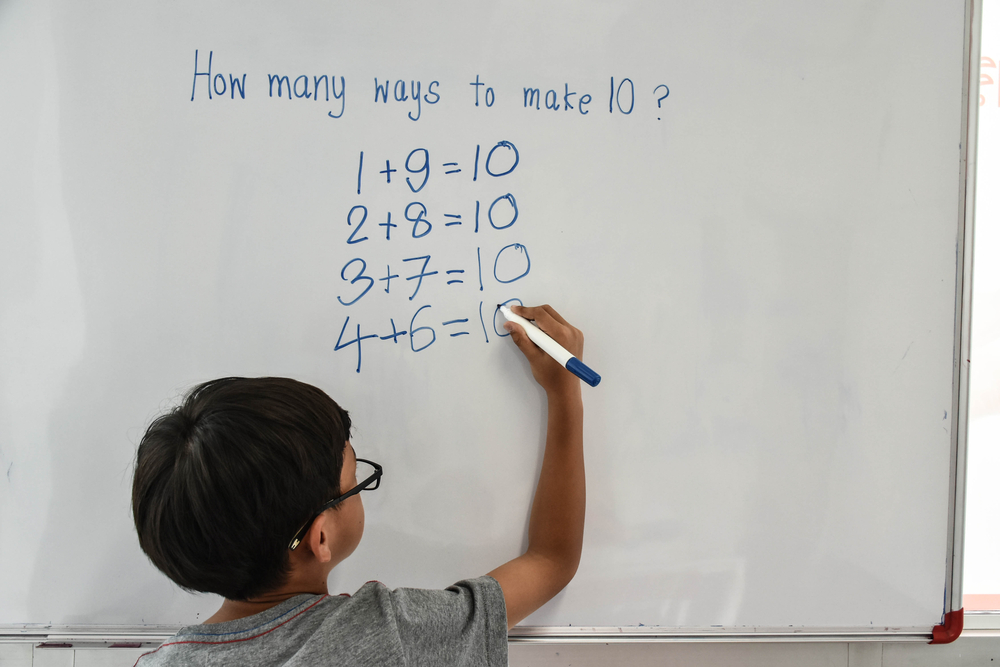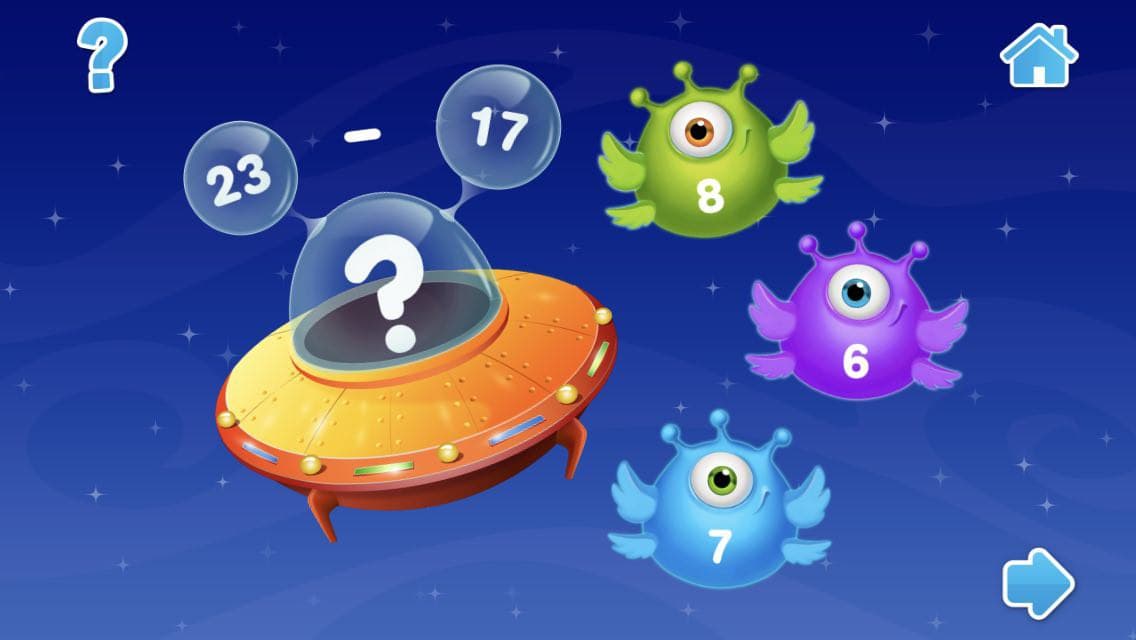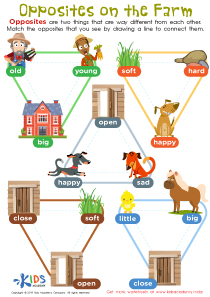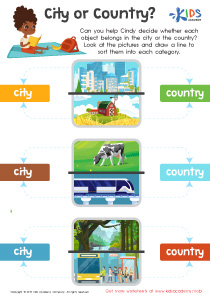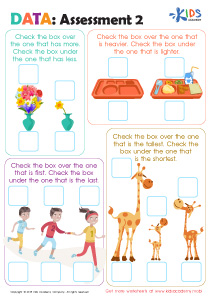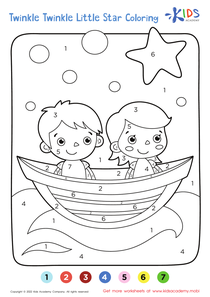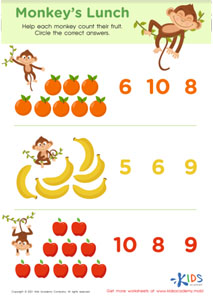Addition skills Word Problems Worksheets for Ages 5-9
11 filtered results
-
From - To
Enhance your child's math abilities with our Addition Skills Word Problems Worksheets, designed for ages 5-9. These engaging worksheets provide a fun and interactive way for young learners to strengthen their addition skills through real-life scenarios. Each carefully crafted problem encourages critical thinking, problem-solving, and practical application of math concepts. Perfect for classroom use or extra practice at home, our worksheets support the development of foundational math skills essential for academic success. Explore our diverse collection to give your child a head start in math proficiency and confidence. Visit [link] to download and start learning today!
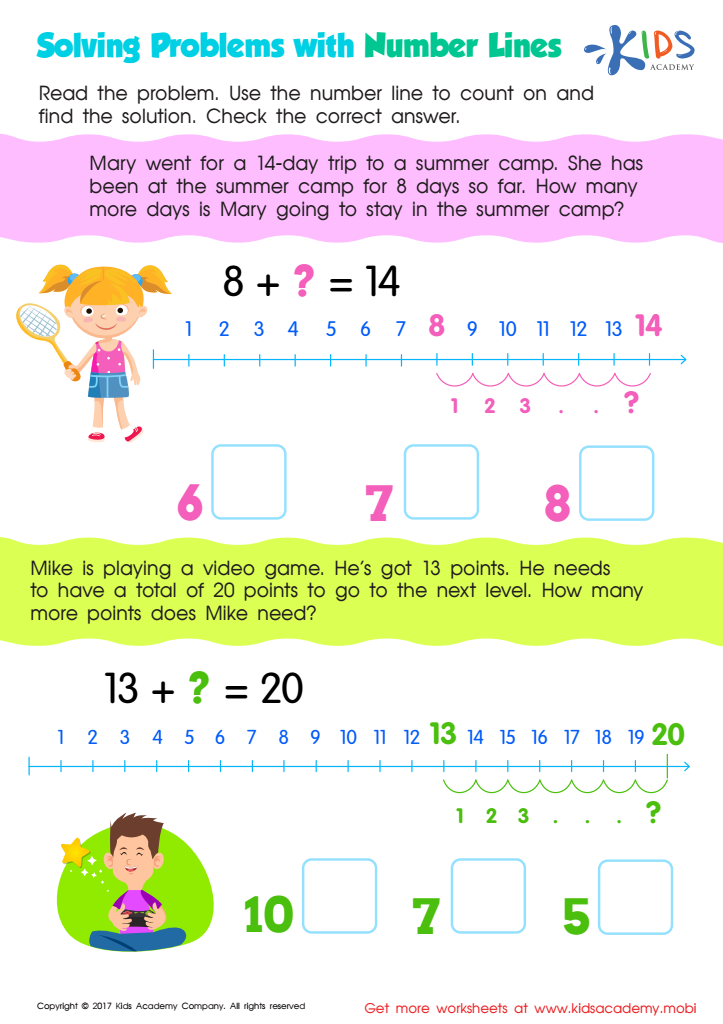

Solving Problems: Number Lines Worksheet
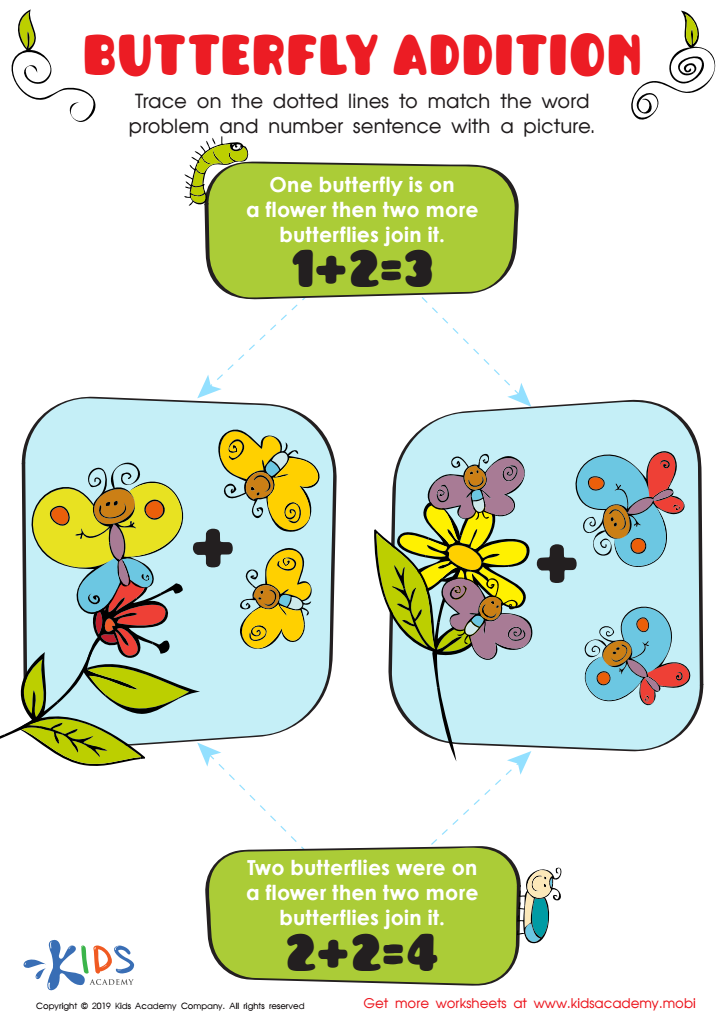

Butterfly Addition Worksheet
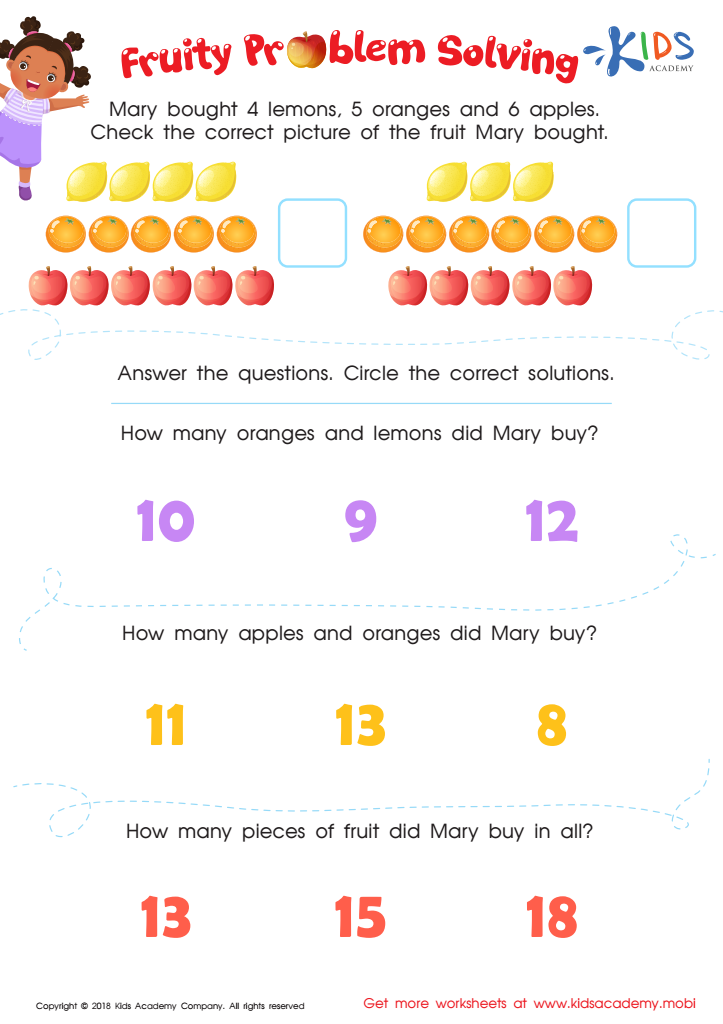

Fruity Problem Solving Worksheet
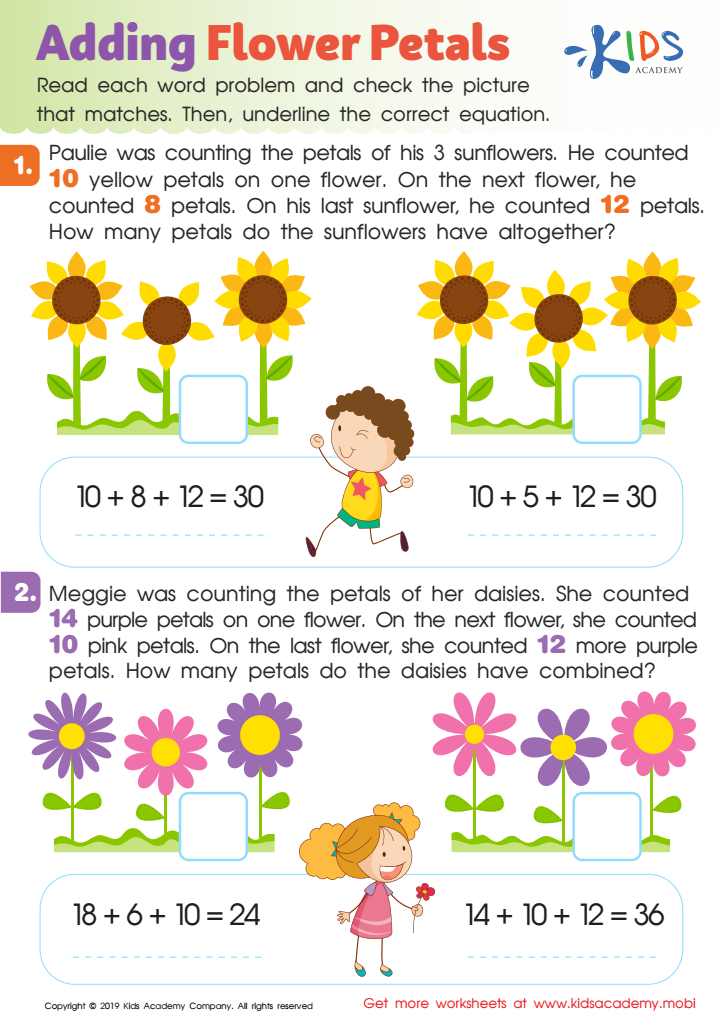

Adding Flower Petals Worksheet
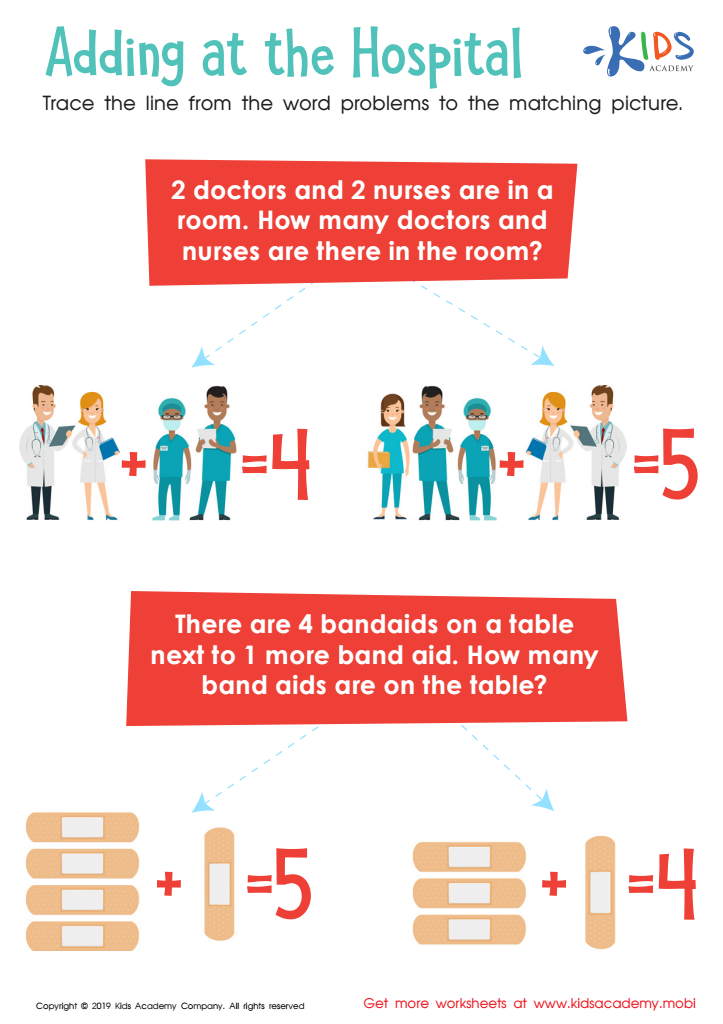

Adding at the Hospital Worksheet
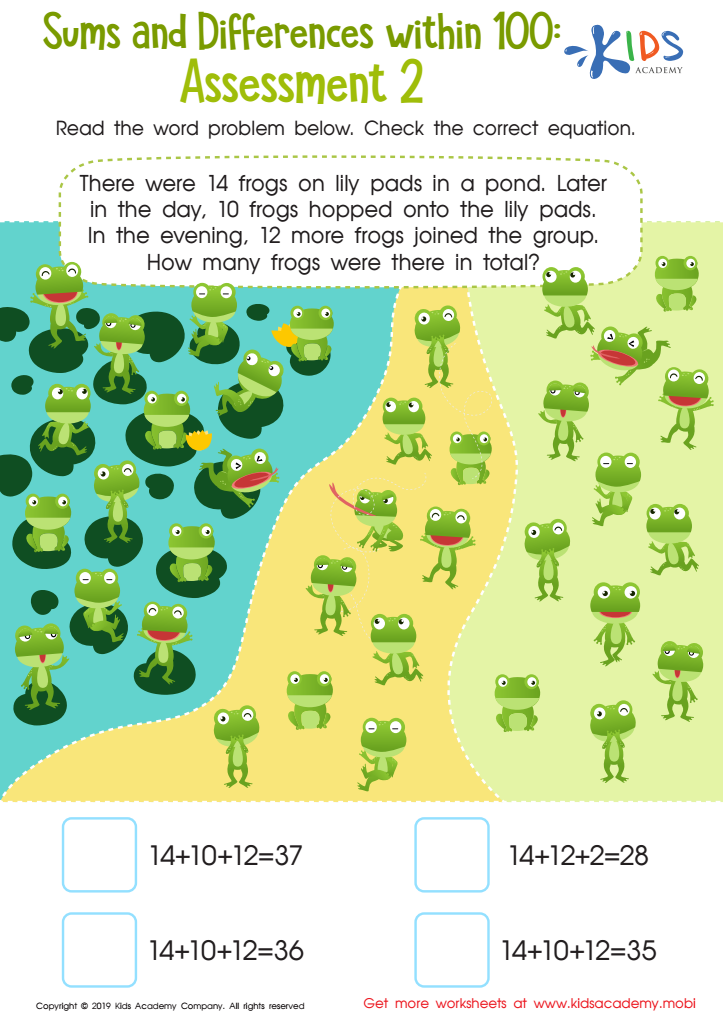

Sums and Differences Within 1 - Assessment 2 Worksheet
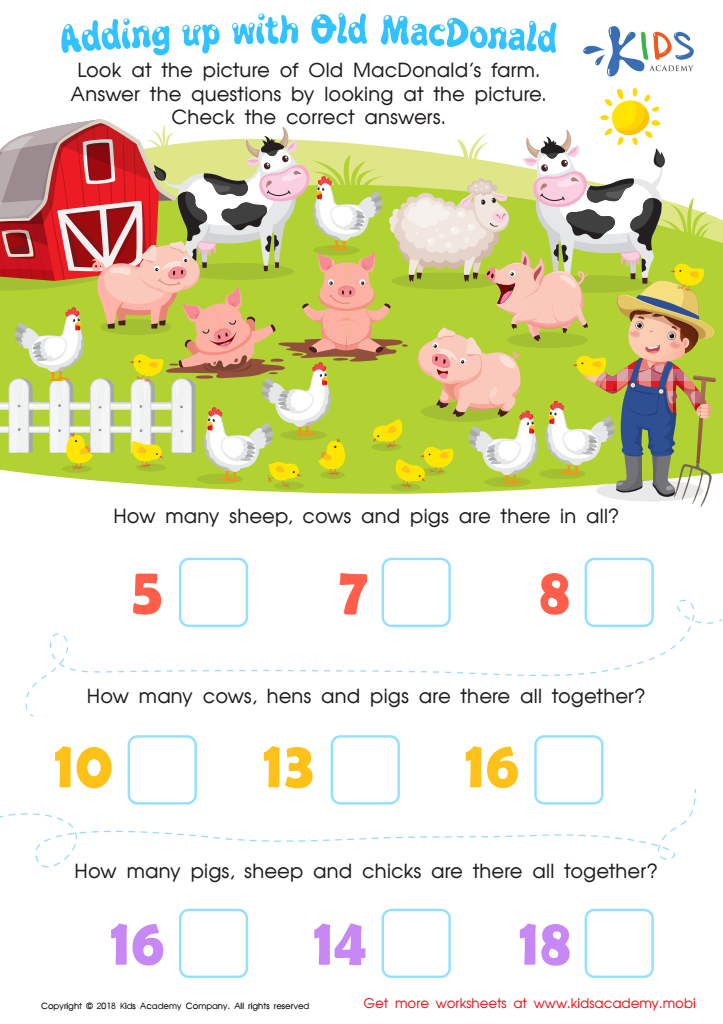

Adding Up with Old MacDonald Worksheet
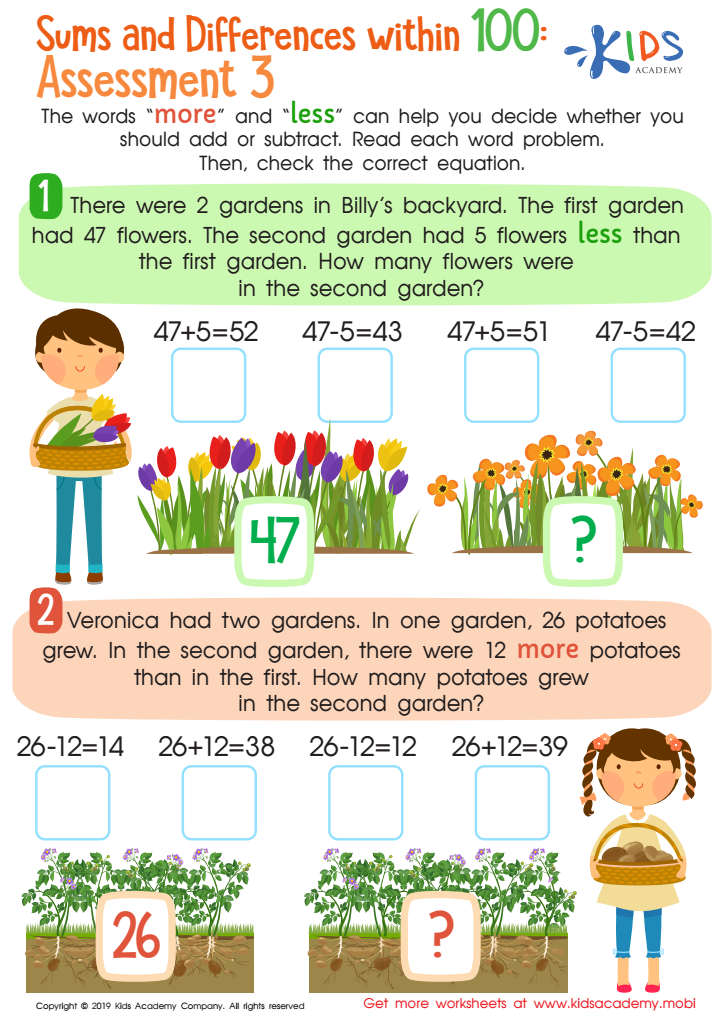

Sums and Differences Within 1 - Assessment 3 Worksheet
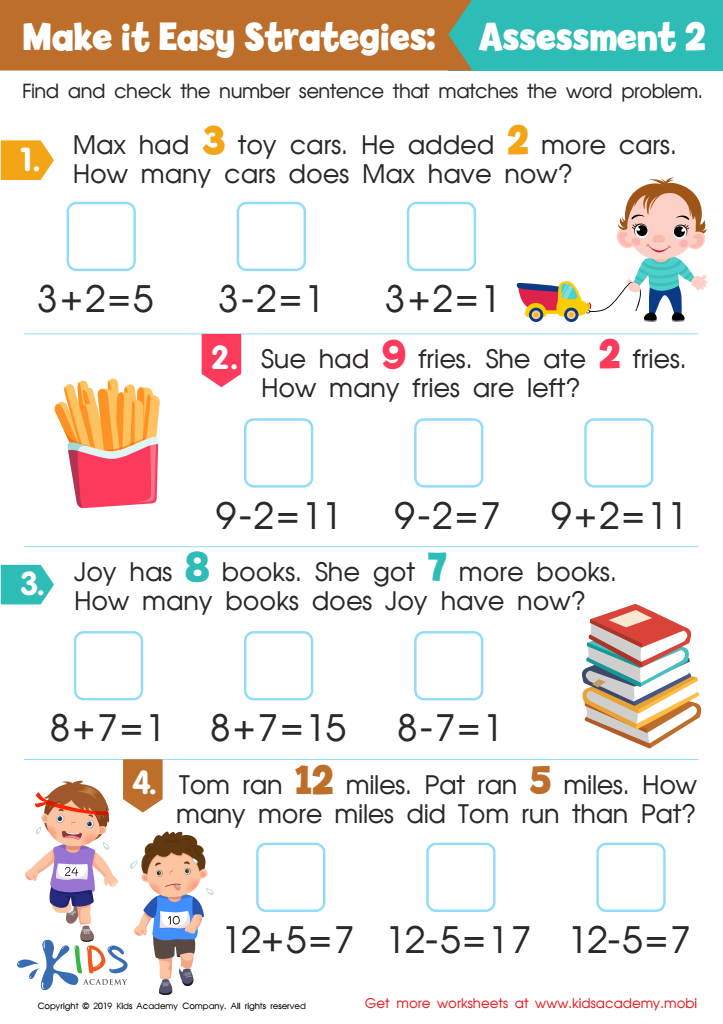

Make it Easy Strategies: Assessment 2 Worksheet
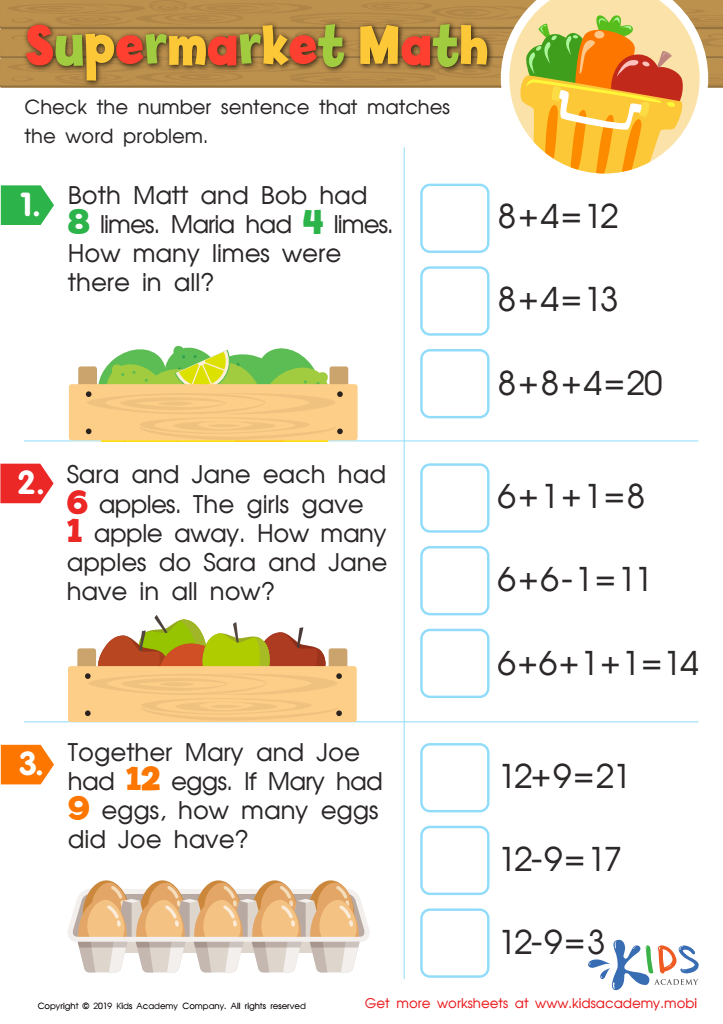

Supermarket Math Worksheet


The Unknown Number - Assessment 3 Worksheet
Parents and teachers should care about addition skills word problems for children ages 5-9 because they lay the foundation for essential mathematical understanding and critical thinking skills. At this impressionable age, children are developing their cognitive abilities, and learning how to solve word problems helps them in various important ways.
Firstly, word problems integrate mathematical concepts with real-world situations. This connection makes numbers more meaningful to young learners and helps them understand the practical applications of math. By offering context to simple addition problems, children can visualize how math is used in their daily lives, from counting apples to sharing toys.
Secondly, solving word problems enhances critical thinking and problem-solving skills. It encourages children to read carefully, understand what is being asked, and determine the necessary steps to find a solution. This process requires them to analyze information, develop logical thinking, and improve their comprehension and reasoning abilities.
Moreover, competence in word problems builds confidence in math, reducing anxiety and fostering a positive attitude toward learning. As children experience success, they are more likely to engage with mathematical challenges enthusiastically.
Therefore, prioritizing addition skills word problems ensures that children not only excel in mathematical operations but also grow into confident problem-solvers ready to tackle diverse academic and real-life challenges.
 Assign to My Students
Assign to My Students



